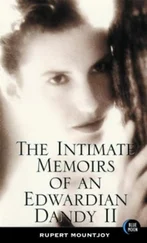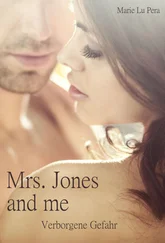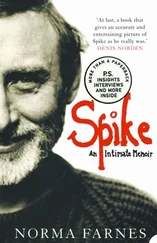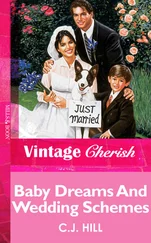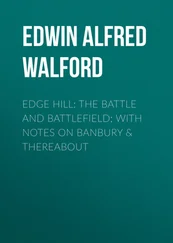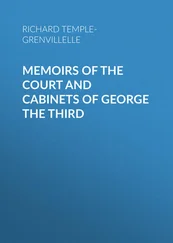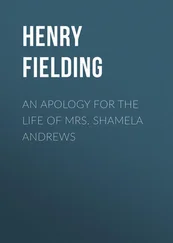When it concluded, Mrs. Kennedy came up to me and said, “I want to go to the president’s office. Will you please get Mr. West?”
We called J. B. West, the chief usher, and he met us in the Oval Office. She wanted to make note of the president’s personal things. Things she wanted to bring with her. The packing had already begun. As we walked around the room, everything was a reminder of a special memory. There was his rocking chair, the glass-encased coconut shell from his PT-109 rescue, family photos, the scrimshaw carved into a whale’s tooth she had given to him as a gift the previous Christmas.
She took one last look at President John F. Kennedy’s office, and we walked out the door.
I returned to my office and began to add to my notes about the past two days. I knew sooner or later the word would come down: Write a report on all activities of the first lady and yourself and have it ready tomorrow. I wanted to be prepared.
Early that afternoon Mrs. Kennedy called and said, “Mr. Hill, I need to go to Arlington National Cemetery in a little while. Can you have the car ready?”
Arlington Cemetery. She had to choose a burial plot for her husband.
“Of course, Mrs. Kennedy. I’ll be waiting for you in the Diplomatic Reception Room when you are ready to go.”
I called Sergeant Watkins, the driver assigned to Mrs. Kennedy, and he brought her Chrysler limousine to the south grounds, along with a follow-up car. It was almost 2:00 P.M. when Mrs. Kennedy, Robert Kennedy, Mrs. Jean Smith, and Mrs. Pat Lawford came down in the elevator.
Paul Landis and I accompanied them on the short drive from the White House, over Memorial Bridge to the National Cemetery. Secretary of Defense Robert McNamara was there to meet us. The five of them walked around a portion of the cemetery, comparing the views across the river, and finally settled on a certain spot. Looking across the Potomac at the Lincoln Memorial, and beyond that to the Washington Monument and U.S. Capitol. It was a beautiful location—so peaceful and serene—a place where the public could come and pay their respects. This would be the final resting place for President John Fitzgerald Kennedy.
Throughout the rest of the day, Mrs. Kennedy remained mostly in the second-floor living quarters, where she was conferring with her brother-in-law, Sargent Shriver, and others about the funeral, and all activities leading up to it. She was actively engaged in each and every detail of the planning.
I knew that she wanted it to be perfect, and I marveled at her strength. She had seen her husband brutally assassinated right next to her, the day before, and now she was directing the biggest state funeral our country had ever had. Not only would it be the final event she planned at the White House, but it would also be the most important and the most complicated. On top of everything, though, she wanted it to be personal.
She remembered how the president had so enjoyed the Scottish Black Watch performance on the South Lawn just prior to the trip to Texas, with their bagpipes and drums and dances. She asked someone to track them down, and ask if they would so honor the president by marching in his funeral procession.
At midnight, Paul and I were assured Mrs. Kennedy had retired for the night and we discontinued for the day. The next day was going to be busy—a private Mass in the morning for members of the family, friends, and White House staff, followed by a formal procession to the U.S. Capitol, where the president’s body would be taken to lie in state. We both went home, and tried to get some sleep.
I CAME IN early on Sunday, November 24, knowing there would be endless details to coordinate, and I was thankful for that. As long as I had something to plan, something to arrange, I didn’t have to think about the events of November 22.
I had been summoned to SAIC Jerry Behn’s office in the East Wing. He knew I was having a difficult time emotionally and wanted to thank me and try to lift my spirits. We were engaged in conversation when Eve Dempsher, Behn’s trusted secretary, interrupted.
“I’m sorry to disturb you, Mr. Behn, but General McHugh is on the line for Mr. Hill.”
“Put him through,” Behn said as he handed the phone to me.
“This is Clint Hill.”
“Clint, I’m in the mansion and we have a problem,” Godfrey said with urgency in his voice. “You better get over here to the East Room fast. Mrs. Kennedy wants to view the president.”
“I’ll be right there.”
I excused myself from Mr. Behn and ran from the East Wing to the mansion. General Godfrey McHugh, President Kennedy’s Air Force aide, led me to the East Room, where Mrs. Kennedy was standing by the door with Attorney General Robert Kennedy.
She was dressed in a black suit, with a knee-length skirt, and had a black veil over her hair. I could tell she hadn’t eaten, hadn’t slept. She looked so fragile.
“What can I do for you, Mrs. Kennedy?”
She looked at me with hollow eyes and said, “Bobby and I want to see the president.”
The image of the white-coated doctor pointing out the wounds in the autopsy room flashed into my mind. She had not seen the president since the body was placed in the casket at Parkland Hospital, and I had no idea what her reaction might be. The last time Bobby had seen the president, his brother was alive.
“All right, Mrs. Kennedy. Let me make sure everything is okay.”
I motioned to General McHugh and we entered the East Room. He went to the officer in charge of the honor guard and said, “Please have your men do an about-face and leave the room so Mrs. Kennedy can have some privacy.”
Before the officer could respond, Mrs. Kennedy said softly, “No, just have the men turn around, they can stay where they are. Just have them move away a little.”
The officer gave the honor guard an about-face and had them take three steps away from the casket. General McHugh and I walked up to the casket, moved the flag down about midway, and opened the casket.
The mortician had done a great job. The president looked so peaceful. I closed my eyes, swallowed hard, and stepped aside.
Mrs. Kennedy and the attorney general walked up and looked into the casket. A few seconds went by and Mrs. Kennedy turned to me and said, “Mr. Hill, will you get me a scissor.”
“Yes, of course, Mrs. Kennedy.”
I walked briskly to the usher’s office and got a pair of scissors and brought them to Mrs. Kennedy. I turned around, and took a few steps away to give her and the president’s brother some privacy.
As I stood there, I could hear the sound of the scissors. I knew what she was doing.
Bobby lowered the lid of the casket, and as they turned and began to walk away, the sight and sound of their agony is something I will never forget. Mrs. Kennedy handed me the scissors and they walked to the elevator and went to the living quarters.
General McHugh and I checked the casket to make sure it was closed securely. I looked at my watch and noted the time: 12:46 P.M. That was the last time the casket was opened.
I returned the scissors to the usher’s office, and as I placed them in the drawer, I noticed, at the very tip, a strand of chestnut-colored hair.
As I was walking back to my office, there were several White House staff people standing together and I heard one of them say, “That bastard deserved to die.”
What? I assumed they were talking about the president. I walked over to them and angrily said, “What the hell did you say?”
They told me Lee Harvey Oswald, the person charged with killing the president, had just been shot. I was stunned.
I didn’t have time to dwell on it. The procession to the U.S. Capitol was about to begin.
The military honor guard carried the casket from the East Room of the White House out the North Portico and placed it on a caisson pulled by six white horses. Mrs. Kennedy followed behind, clutching John’s and Caroline’s hands—one child on each side. Members of the family walked behind the three of them, and Paul and I followed. Mrs. Kennedy got into the waiting limousine with her children and the attorney general, as President and Mrs. Johnson slid in with them.
Читать дальше


